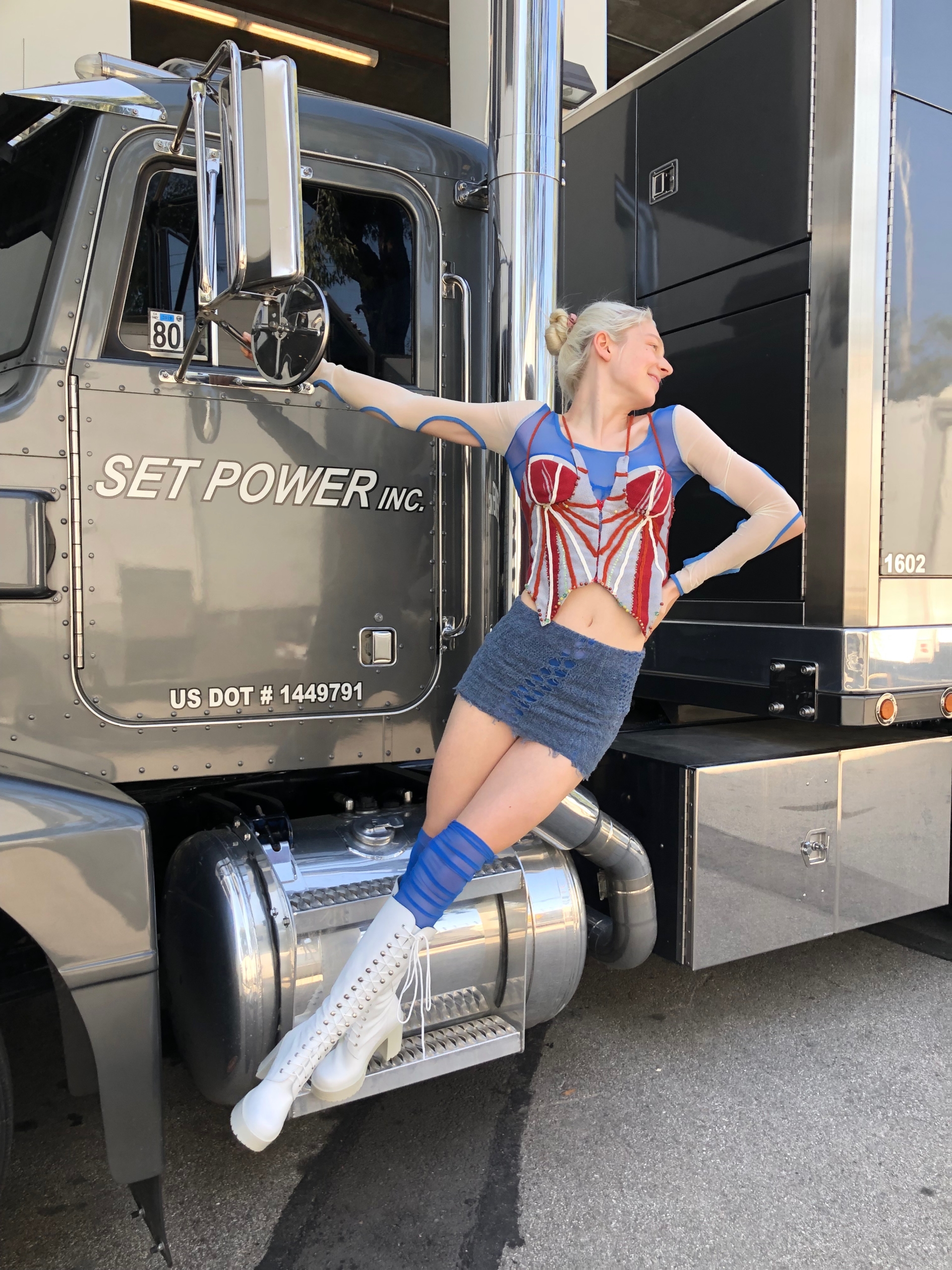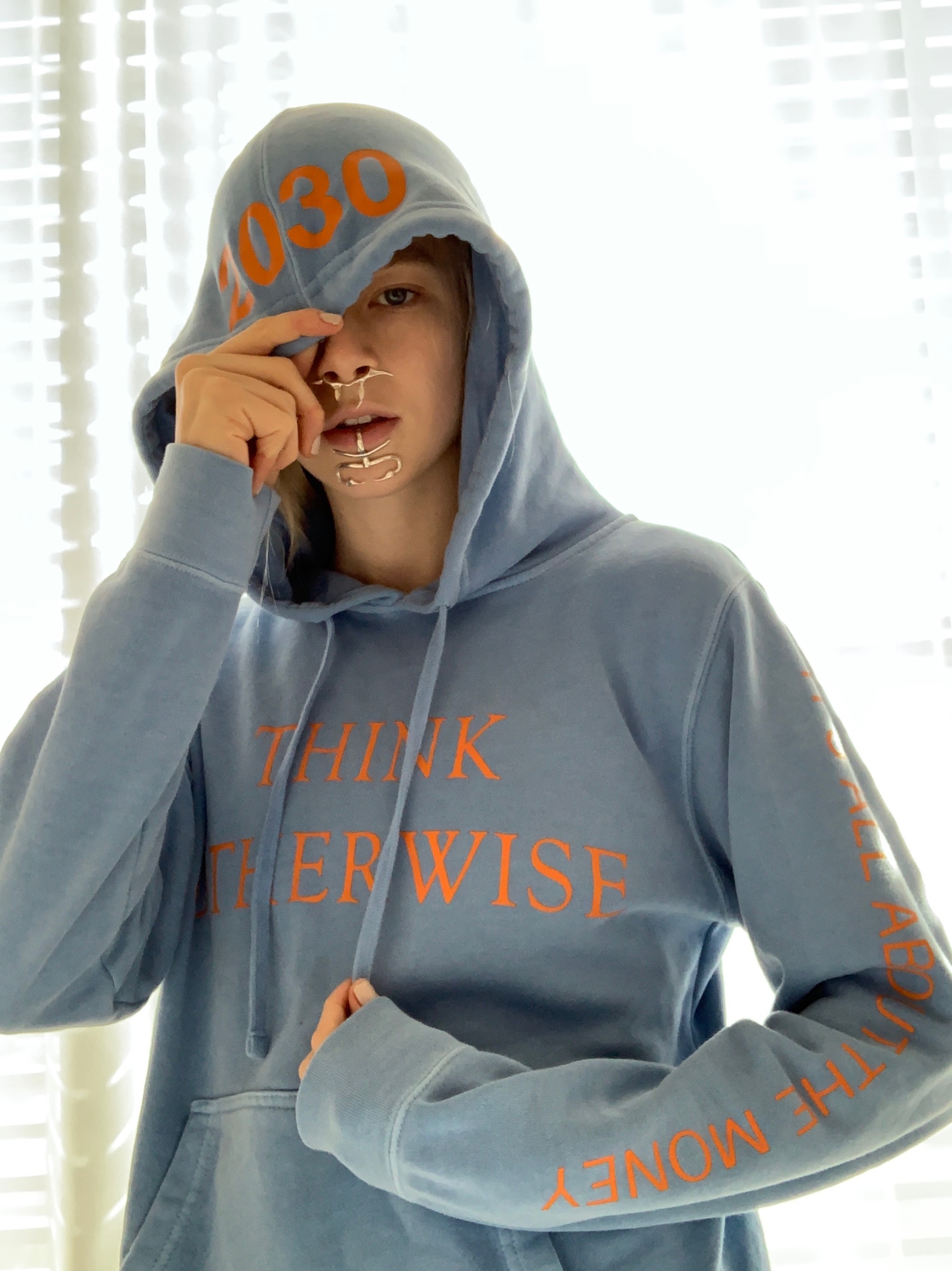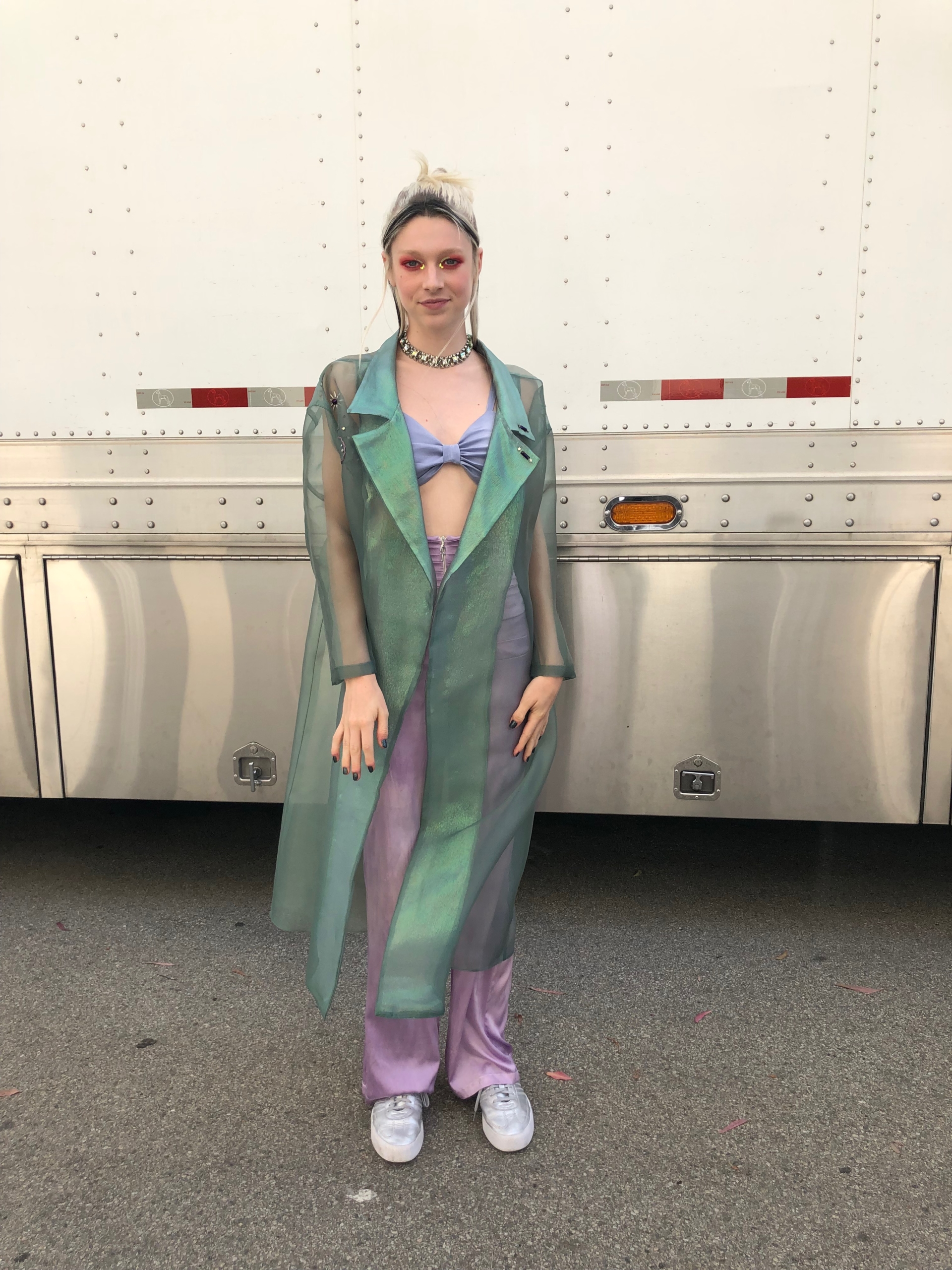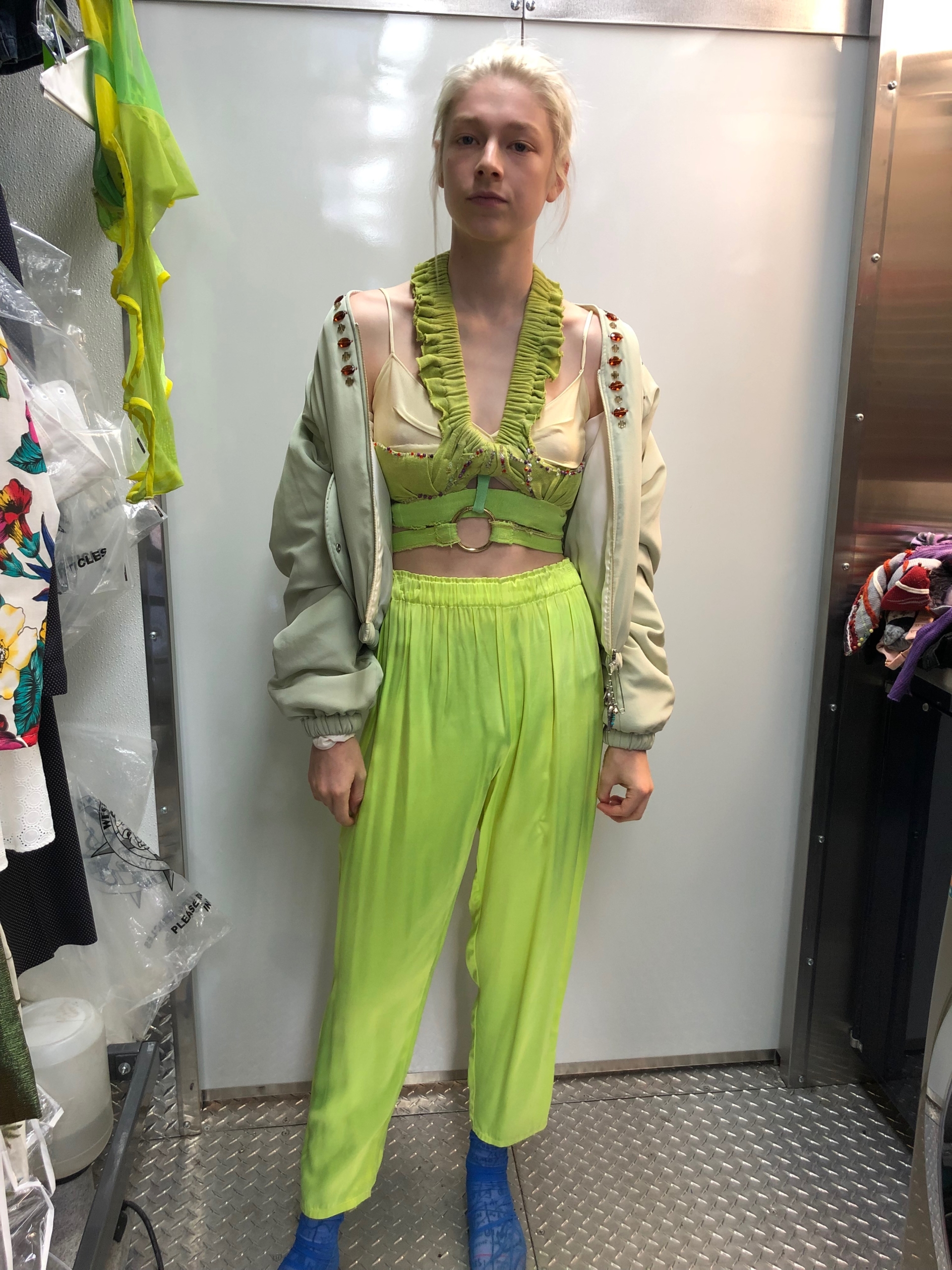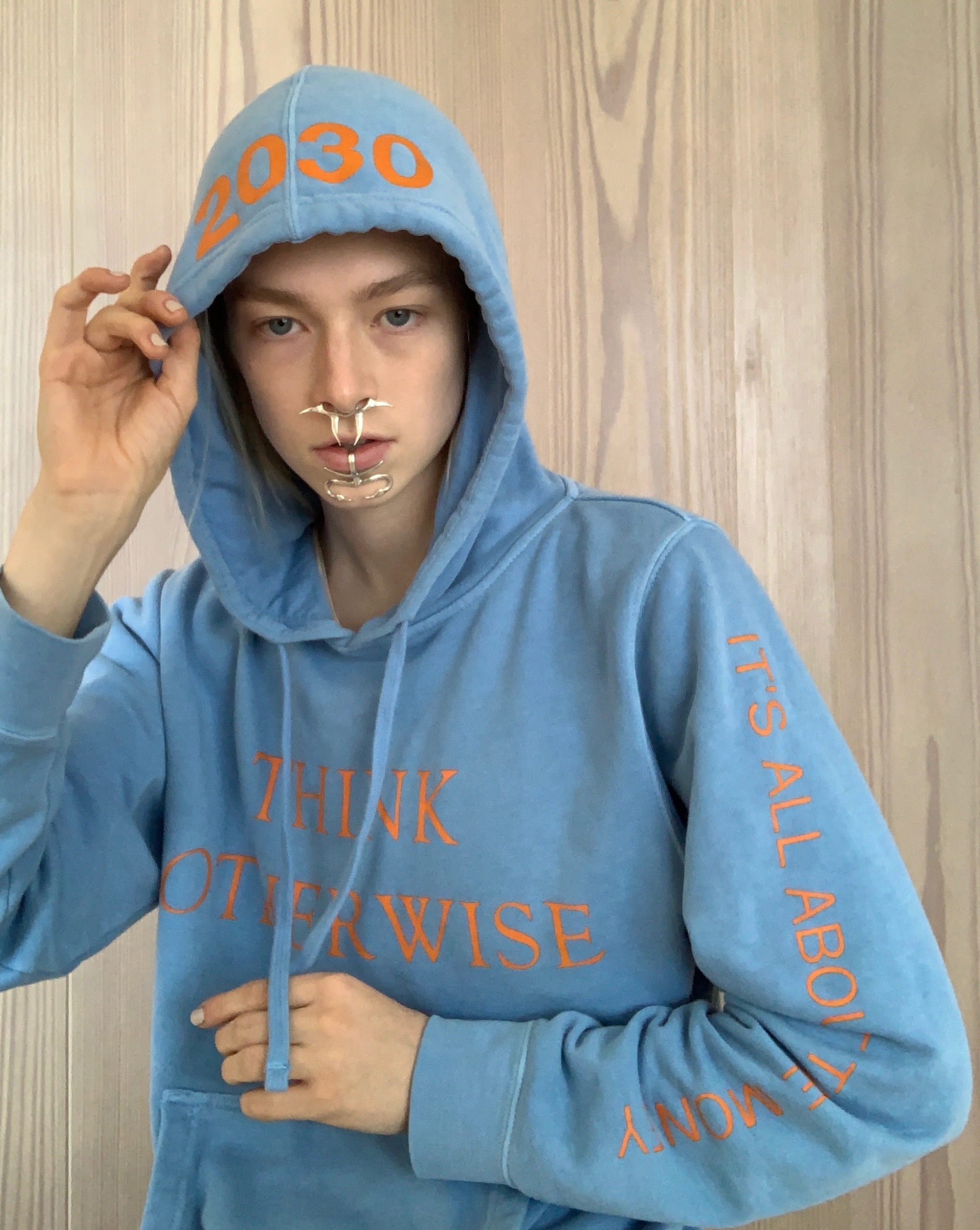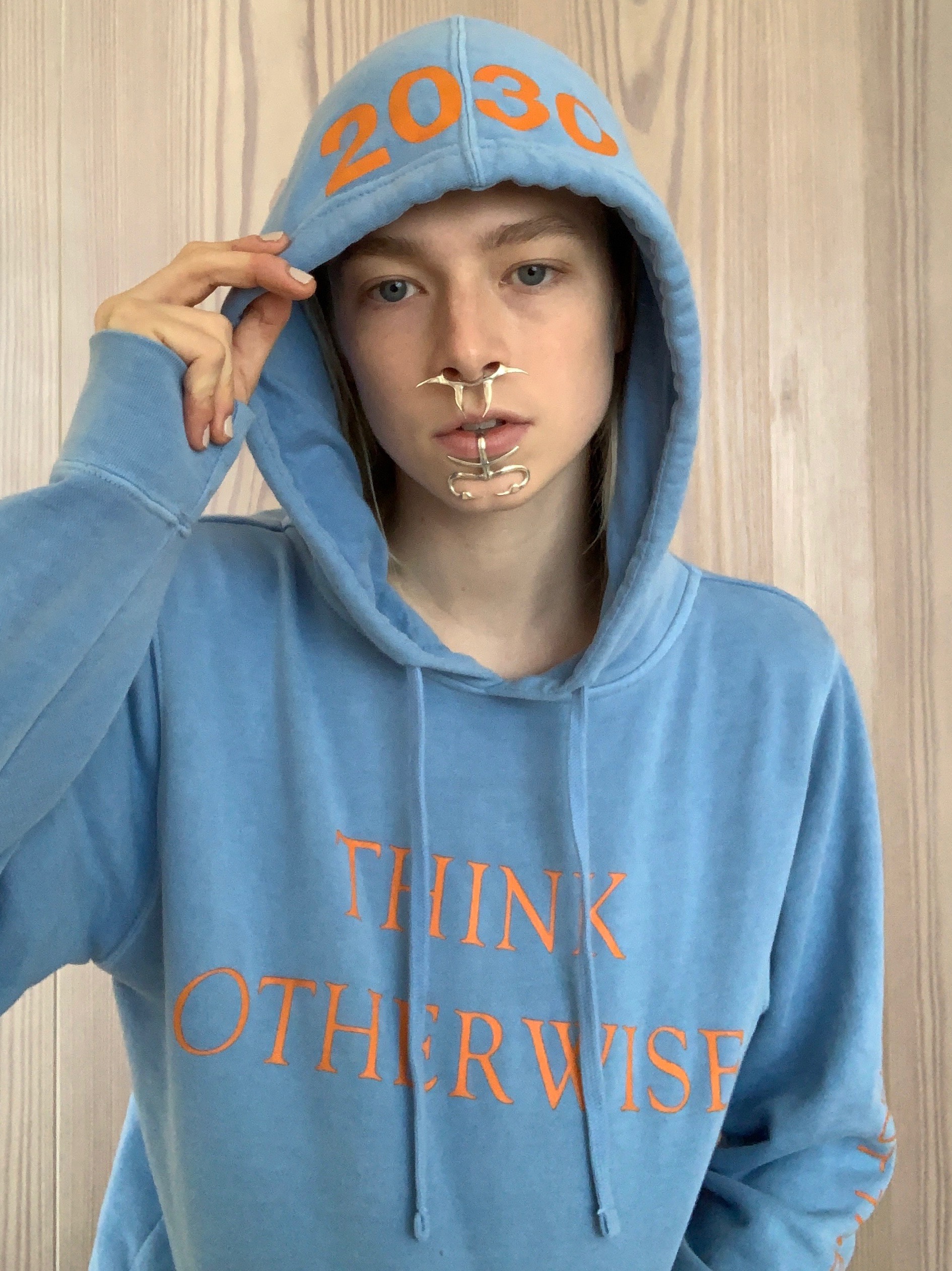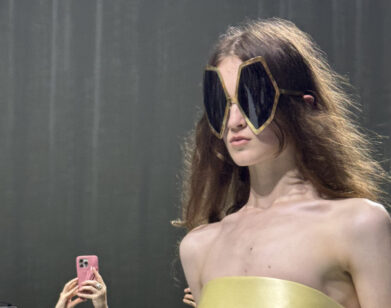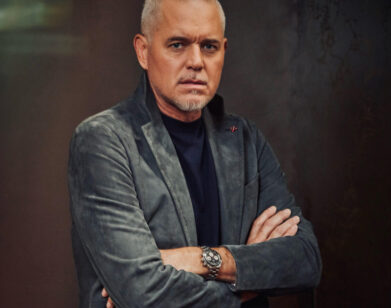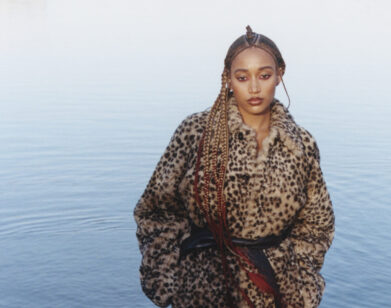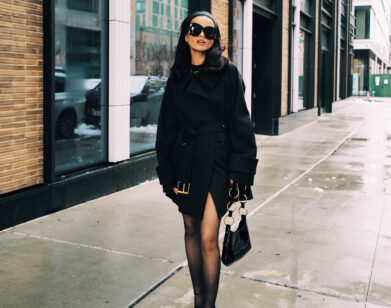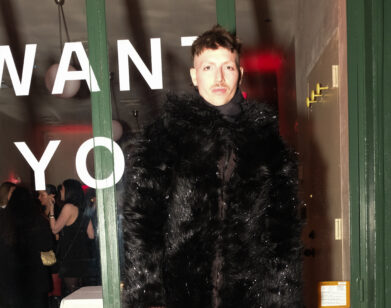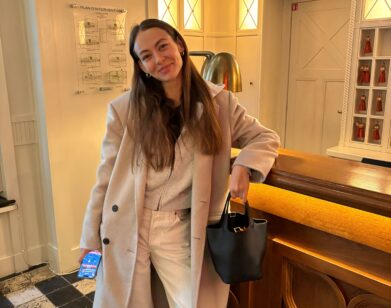in conversation
Heidi Bivens and Raffaella Hanley on Making Euphoria the First Shoppable Show
Designer Raffaella Hanley spent the weekend running through the halls of the Freehand Hotel, shooting the looks of her Spring 2021 collection (which launches this week), but she always has time for Heidi Bivens, the costume genius behind the HBO series Euphoria, who has become her confidante and advocate. Before Euphoria even aired, Bivens and Hunter Schafer’s respective mood boards shared a vision for Jules, the character that would catapult them both into the eye of the zeitgeist. Jules wasn’t going to look like other girls, she was going to be otherworldly—she was going to wear Lou Dallas by Raffaella Hanley. Bivens’s email took Hanley by surprise. It was her first brush with Hollywood, and it’s been a cinematic ride ever since. Together they created pieces that helped define the edges of the luminous paradox that Schafer brings to life in the dark of Euphoria’s tenses. Now they are working on season two.
For Hanley, Euphoria opened up new doors, as did her run in last years’ CFDA young designer award, which encouraged her to flesh out her Think Otherwise streetwear line that had always run alongside her DIY atelier collections. When the pandemic hit, her line of hoodies and sweatpants gained traction encouraging Hanley to broaden her offerings over the course of the summer. Alongside this project, she began to work on her SS21 collection which she is debuting tomorrow. Here, the designer offers a sneak peek to Bivens, her creative collaborator, about Euphoria’s new shoppable future, women in streetwear, and numerology.
———
BIVENS: Good morning. You look cute. I like the haircut.
HANLEY: Thank you. I had no sleep, I’m trying to drink coffee. It’s not working. I’m dying trying to finish this collection.
BIVENS: What does your morning look like today?
HANLEY: Well I have this model coming over at noon and I’m wondering why I cast a stranger during COVID. I haven’t seen strangers in so long. It feels almost foreign to see someone you don’t know.
BIVENS: That leads me to my first question. Since March, a lot of designers have had to rethink what they do and I’m wondering how your experience has been overall and how it’s changed your designs?
HANLEY: When it first hit, I decided I didn’t feel comfortable going to the garment district at all so I had to shift to what could I sew on my machine, which ended up being really positive because I forgot I knew how to sew and that in fact, I have this great sewing machine. That’s where I’m at, I’m remembering to do more on my own.
BIVENS: That ties into your take on sustainability, which I know has been important to you from the beginning of your career. I’m wondering how it comes up in your production methods?
HANLEY For this collection, I’ve been cutting up a lot of t-shirts, hoodies, and sweaters. I thought that was kind of exciting because it’s about the shapes, so if you like it, it can be reproduced with any hoodie or t-shirt, not just my Think Otherwise pieces. In this way, the collection could be scaled to infinity by people at home or by things that already exist in the world.
BIVENS: Let’s talk about the messages you apply to the streetwear pieces. Where did the Think Otherwise collection start?
HANLEY: It’s a collaboration with my dad, actually. Some of the messages are from pieces he did back in the ’60s when he was protesting the Vietnam War. After 9/11 is when the “Savage Capitalism” one came in. I like hearing about how people expressed themselves in protests and then bringing in what I’ve seen, especially amongst today’s youth culture. This collection carries the energy of everyone who can do it themselves.
BIVEN: With the Depops and Etsys of the world, how young people are consuming has changed considerably over the past decade. Do you think about that when deciding how to make?
HANLEY: I don’t have Depop or Etsy but I do have a website. I like the challenge of making your website feel interactive and getting customers to find things through your channels rather than others. For example, I like the way Rihanna has been doing drops. It feels very aligned with how people want to consume.
BIVENS: It also makes it harder for fast fashion brands to react and copy.
HANLEY: Personally, I want to switch the gear so that the secondhand becomes cool. That’s why The RealReal has been super helpful. In high school we all did thrift and then would pair it with something more luxurious and that culture has to come to the forefront of the industry rather than knock-off Fendi. Because why is that cool? We should be lusting after things that are authentic.
BIVENS: Do you think there will be room for brick and mortar and experiential shopping in the future?
HANLEY: Yes, I think it has to be a combination of both. That’s why I did a zine recently. I wanted something physical that was off the internet that you could have, because I do think the best way to shop for clothes is in person. That sense of touch is critical. It’s about the culture around your brand and really cultivating that. If there is a real soul or spirit to the brand itself, it will last, but ones that rely on the fluff of a marketing team inevitably crash.
BIVENS: You’ve always had the same spirit it seems. Your early days at RISD have been reported on extensively. You are described as self-taught, and I wanted to get your take on that.
HANLEY: To some extent I am self-taught, but I did a year at Parsons that really helped. It’s true, I can’t make patterns, I have my own weird method of doing things, so I do feel like an outsider in some regards.
BIVENS: I think that has inspired a lot of people who are now more open to jumping in. I see that with Euphoria. Was there a thrift culture at RISD?
HANLEY: We were incessantly going to this place called Savers which is like a Salvation Army. We made pilgrimages all the time. It was cheap thrills and we looked crazy.
BIVENS: Recently in a conversation, we had talked about you possibly taking on the role of teacher.
HANLEY: I want to empower people to revisit garments. It feels important to make some kind of video series to share what I do with clothes when I’m sick of them so it can maybe inspire someone else. Everyone can have great fashion and it’s fun to encourage people to craft on their own and let their own personality come out. I want to start with some mask-making classes for kids.
BIVENS: What was the main inspiration for the new collection?
HANLEY: Walking across the Manhattan Bridge. I know it’s cheesy but I’ve been really getting into the graffiti around New York lately. I actually got this book of 1970s graffiti called the Faith of Graffiti, so I’ve been looking at that, too. I guess in a way I’ve been rethinking what punk means now.
BIVENS: Can you speak to the gender fluidity of this collection?
HANLEY: I always think first about what I want to wear and morph out from that. I’d rather have everything be fluid because I think that’s the future. Now, I`m thinking about how to include that more in my practice. I don’t know if it’s hard these days. I like to see clothes on people.
BIVENS: Are there any people real or imagined you’ve been thinking about with this collection?
HANLEY: I love the idea of creating characters, but then I have a hard time thinking narratively. I start to get tangled up in, “How do I tell a story?”
BIVENS: Well I know Hunter Schafer has been a recurring muse for you. She is magic and one of my muses. You helped me create her look for the first season before anyone knew what Euphoria was. Do you remember the email?
HANLEY: Yes! I looked you up and saw you’d done a David Lynch film and knew I had to respond. It’s one of the highlights so far of Lou Dallas, because Hunter really brought the clothes to life. The garments looked so good with the cinematography. To see it on television was awesome.
BIVENS: For season two, we are going to be able to collaborate together again. This time we will get to do something new as her character Jules starts to evolve. So that’ll be fun.
HANLEY: I know. I’m so excited
BIVENS: Earlier today we talked about the idea of doing a merch collab for the show, which is something we’ve talked about in the past and is finally going to happen.
HANLEY: I have been thinking about this idea since you shared it with me last September after my show. I’m happy your producers saw the light. It’s brilliant.
BIVENS: A shoppable show has never really been done before at least that I know of.
HANLEY: I feel like it is how people want to buy clothes now.
BIVENS: It’s almost like seeing something on the screen and being able to purchase it is the new experiential shopping. Barney’s and Opening Ceremony of the world are no more. We have less opportunity to walk into a store whether it’s because of a pandemic or the state of the fashion industry. This could be a new time of experience.
HANLEY: Maybe catalogues need to come back.
BIVENS: Funny you say catalogue, I just got a holiday one in the mail from Amazon. They curated stuff from their site and put it in an actual paper catalogue, so you might have something there.
HANLEY: Is mall culture dead?
BIVENS: Pretty much. I went by the Grove and it’s dead. No one is going out the same way. I was wondering what hobbies you might have picked up during everyone’s forced vacation?
HANLEY: I got into reading and to be honest, a bit of numerology. I’m especially into it for naming. I think of spiritual alchemy as another tool. I truly believe that if the world has become so nonlinear the only way to navigate it is with magic. So it’s like how can I hone my powers in that regard. It helps you get in touch with yourself, and develop deep feelings for everyone around you. Positivity and love really need to be at the forefront, so that’s the message that I hope resonates the most. There is so much darkness and negativity around. How do we stay safe on the edge? We need to find ways to bring people back.

